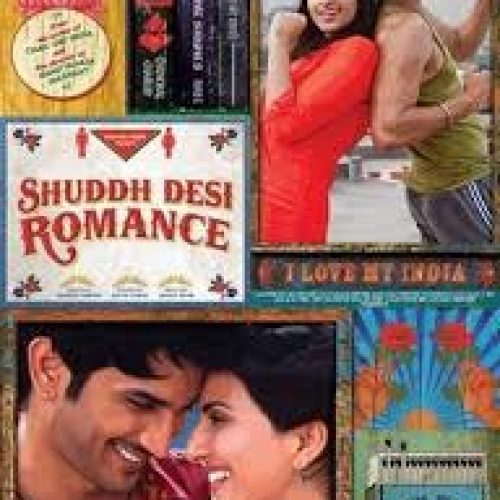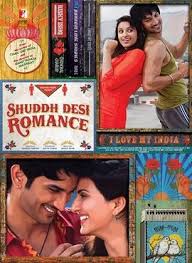In the grand tapestry of family dramas that Bollywood is known for, this one stands tall as a celebration of traditional Indian values, relationships, and togetherness. Hum Saath Saath Hain, released in 1999, directed by Sooraj R. Barjatya, is a family-centric movie that features an ensemble cast including Salman Khan, Saif Ali Khan, Mohnish Bahl, Tabu, Sonali Bendre, Karisma Kapoor, and Mahesh Thakur. Set in a vibrant Indian household, the story unfolds in a small town in Rajasthan, capturing the essence of joint family life. A blend of drama, romance, and familial relationships, the movie falls under the genre of family drama with an added touch of musical charm, a hallmark of Barjatya’s films.
The plot revolves around the prosperous Ramkishan family. Ramkishan (played by Alok Nath) is the patriarch of a wealthy family, happily married to Mamta (Reema Lagoo). Together, they have three sons: Vivek (Mohnish), Prem (Salman), and Vinod (Saif), along with a daughter, Sangeeta (Neelam). The story is a testament to love, sacrifice, and the bonds that hold a family together. The family dynamic is tested when Mamta’s insecurities regarding the eldest son, Vivek—who was adopted—surface, creating a division within the household. As emotions run high, relationships are strained, and the family must confront its inner turmoil to find peace and unity again. It’s a heartwarming portrayal of the trials and tribulations that large families often face, and the love that ultimately overcomes all obstacles.
One of the strongest elements of the film is its acting, which holds the emotional core of the story. Mohnish delivers a nuanced performance as Vivek, the eldest son who is both responsible and sensitive, despite feeling unwanted due to his stepmother’s doubts. His portrayal is soft-spoken yet deeply emotional, especially in scenes where he navigates the delicate balance between duty and hurt. Salman, as Prem, brings a youthful and charming energy to the film, playing the middle son who is the peacemaker. His natural charisma adds levity to the more serious moments of the film, while his romantic subplot with Preeti (Sonali) is both sweet and engaging. Saif, as the youngest son Vinod, delivers a playful and energetic performance, providing a lighter, fun-loving counterpoint to the more intense family drama. The women, too, shine brightly. Tabu as Sadhna and Sonali as Preeti bring grace and warmth to their roles, while Karisma as Sapna injects humor and vivacity into the otherwise sentimental narrative. Alok Nath and Reema Lagoo, as the parental figures, are effective in their roles, grounding the emotional stakes of the film with their experience and subtle performances.
Direction is another noteworthy aspect of the film. Sooraj Barjatya, known for his previous family-centric blockbuster Hum Aapke Hain Koun..!, brings the same heartfelt sensibility to this film. His approach to storytelling is steeped in tradition, and he focuses heavily on the importance of familial values. His direction ensures that even in a large ensemble cast, each character has their moment to shine. He has a way of creating emotional resonance in even the simplest scenes, from a family dinner to a sibling argument. The pacing, however, can feel a bit slow at times, especially during the more melodramatic sequences, but Barjatya’s emphasis on emotional depth compensates for the slower moments.
The music, composed by Raamlaxman, is another crucial element that enhances the emotional weight of the film. Songs like “Mhare Hiwda Mein Naache Mor” and “Chhote Chhote Bhaiyon Ke Bade Bhaiya” beautifully capture the essence of family bonds and Indian traditions. The songs are woven seamlessly into the narrative, enhancing rather than disrupting the flow. Raamlaxman’s score is melodious and fits perfectly with the setting of a close-knit family in a small town. The background score, while simple, effectively underlines the emotional highs and lows, never overwhelming the scenes but rather complementing them.
Cinematography by Rajan Kinagi plays a significant role in bringing the grandeur and warmth of the family’s home and lifestyle to the forefront. The vibrant colors of Rajasthan, the traditional outfits, and the grand sets all serve to create a visual treat. Each frame is designed to evoke a sense of belonging, with wide-angle shots of the family home, lush outdoor locations, and colorful celebrations that reflect the film’s core themes of unity and festivity. The use of light and shadow in more intimate scenes—such as the ones between Vivek and his father or the tension-filled conversations between Mamta and her sons—adds a layer of subtlety to the cinematography.
The film’s costume design is another aspect that stands out. Traditional Indian attire dominates, with the women often seen in elegant sarees and the men in kurtas or sherwanis, reflecting the cultural setting of the film. The costumes help to establish the authenticity of the family’s affluent yet traditional background. The attention to detail in the clothing, from the embroidery to the color schemes, enhances the richness of the film’s aesthetic.
Editing, handled by Mukhtar Ahmed, is clean and straightforward, with a focus on letting the story breathe. However, at over three hours long, the film could have benefitted from some tighter editing, particularly in the second half where the emotional conflicts stretch on a bit too long. Still, the editor does a good job of balancing the film’s many subplots, ensuring that no character or storyline feels neglected.
Themes of family, loyalty, and sacrifice are at the heart of this film. Hum Saath Saath Hain emphasizes the importance of staying together through thick and thin, a message that resonates deeply with traditional Indian audiences. The film also subtly explores the dynamics of blended families, particularly through the character of Vivek, who, despite being adopted, proves his loyalty and love for the family time and again. The film’s exploration of how insecurities and misunderstandings can tear a family apart, and how love can ultimately bring them back together, is timeless and universal.
Overall, Hum Saath Saath Hain is a film that tugs at the heartstrings. While its pacing may feel slow to modern viewers and its emphasis on traditional values might seem overly sentimental to some, it excels in delivering a warm, family-oriented narrative. The performances, particularly by Mohnish, Salman, and Tabu, are stellar, and the direction is solid. The music and visuals, too, are perfectly in sync with the film’s tone, creating an immersive experience. If you’re in the mood for a heartfelt, old-school family drama that highlights the importance of love and togetherness, this is a film that should not be missed.







